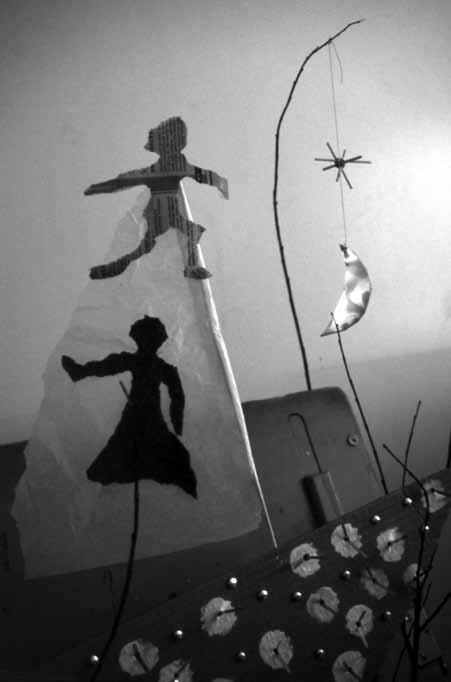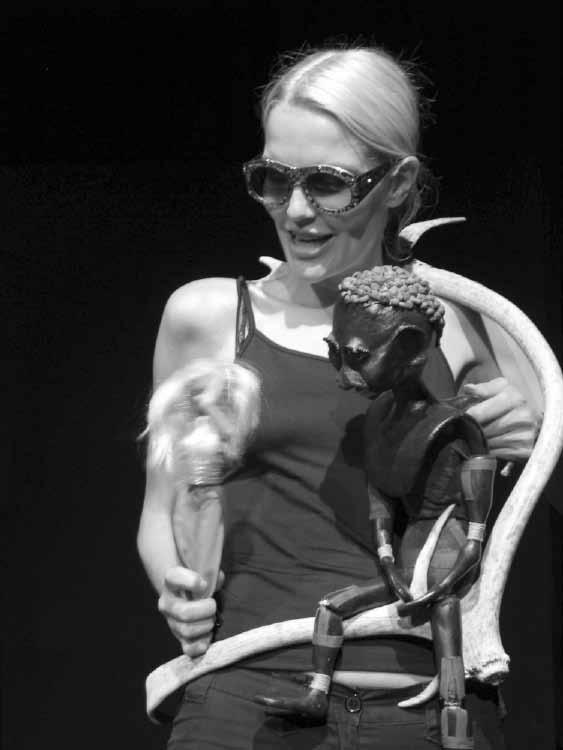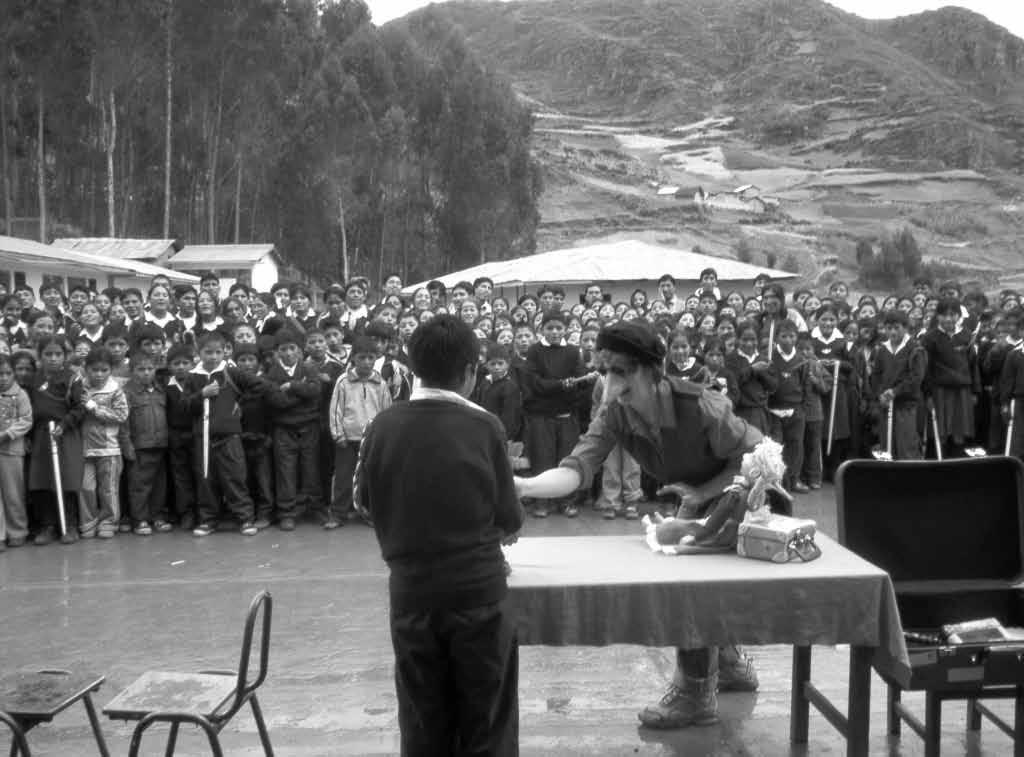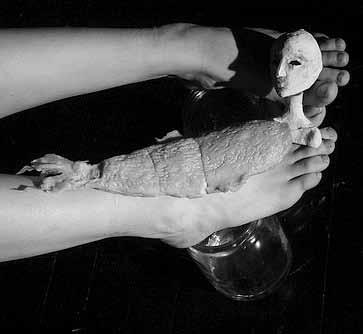
8 minute read
Dimensis of Finnish Puppetry
Dimensions of Finnish puppetry -
100th anniversary and fowards
Advertisement
Finnish puppetry has been celebrating its 100th anniversary in 2009. As early as 1909, Kalle Nyström’s Marionett-teatern started giving regular puppetry performances in Helsinki, the capital of Finland.
The repertory consisted of satirical shows for adults and tales for children. In the course of one century Finnish puppetry has made a long journey from the margin to become part of the mainstream in theatrical arts. The final artistic and international break came in the 1950s with Mona Leo´s lyrical performances in her Helsingin Nukketeatteri (Helsinki Puppet Theatre), which also visited foreign festivals. The 1970s saw the establishment of five professional puppet theatres, which finally got state subsidies in the 1990s. The 70s was also a lively period of puppetry education courses around Finland enhancing the use of puppetry in schools, kindergartens, libraries and parishes. In 1980s several professional solo puppet theatres were established in different cities and municipalities. It was also the decade of Vaasa International Puppetry Festival, where Finnish and foreign puppeteers performed and held high quality courses. Strong growth The 1990s continued the strong growth of Finnish puppetry with many new groups. The young generation graduating from The Turku Arts Academy vocational puppetry education started entering the puppetry stage. The beginning of a new millennium in 2000 was marked by three generations of puppeteers working side by side with various approaches to the art of puppetry. Traditional stories and fairytales for children meet new themes and aesthetics, plays aimed at adult audiences are presented combining modern puppetry, dance, circus, video clips and visual theatre. Finland has at the moment a very lively puppetry scene, which includes even three Regional Artists in Puppetry and six puppetry houses in various parts of Finland. Puppeteers have also established new kinds of joint organisations: Puppet Studio in Turku, Puppet Theatre Centre Buoy in Helsinki, The Turku International Puppetry Connection TIP and Lapland Puppet Theatre Association in Rovaniemi. Approximately 150 puppeteers all over Finland are members of UNIMA Finland, which as well has recently had a jubilee: In 2009, UNIMA Finland celebrated its 25th anniversary with several events. On the 11th of February, The Day of Finnish Puppetry, Theatre Museum in Helsinki opened an extensive puppetry exhibition “The Invisible Hand”. More than 300 theatre puppets from 19th to 21st century are now touring around Finland in different museums. That very day was published the first ever Book of Finnish Puppetry, which tells in 326 pages about the history, development and present status of Finnish puppetry. During the spring Theatre Museum hosted also a series of lectures on puppetry research in collaboration with Helsinki University and a panel discussion on puppetry education in Finland in collaboration with UNIMA Finland. In February and March UNIMA Finland organized two Puppetry Showcases, one in northern Oulu and one in southern Helsinki presenting 12-14 puppetry groups and workshops for children and adults. In October puppet theatres from northernmost parts of Finland, Sweden, Norway and Russia - as well as artists from Iceland, Denmark, Belgium, USA and Japan - convened at the VII Barents Sea Region Puppet Theatre Festival in Oulu and Rovaniemi.
Sixfingers Theatre’s first ever performance, the multiple award-winner Golemanual (2005) is based on physical theatre in which methods of hand and mask theatre as well as Butoh dance are used in creating visions of mythical images dormant in our subconscious © Ishmael Falke
International connections
The puppet theatre networks in the Barents and the Baltic Sea regions, which were launched in the early 1990s, have regularly organised festivals, joint projects and training events in their member countries. The Baltic Sea Countries Puppet Theatre Network gathered together in conjunction with the Barents Region puppet theatre festival in Oulu to decide on joint projects and the next festival in 2011 in St. Petersburg, Russia.
Finnish puppetry artists have contacts and networks spanning many continents. Puppet Theatre Hevosenkenkä (Horseshoe) has in the past few years toured in Japan, Vietnam and South Korea with several of its productions. Juha Laukkanen’s Puppet Theatre Sytkyt regularly tours in South-East Asia and, for example, in Thailand he has performed a puppet theatre show dealing with the tsunami. In the past few years, Finnish puppet theatres have toured and trained also in Latin America. Ilona Lehtoranta from Puppet Theatre Capelle visited Peru in 2007, as part of the Finnish Lutheran Church’s Common Responsibility Campaign, which that year focused on Peru, with a project aimed at the mountain Indians of the Andes. Anne Lihavainen from Puppet Theatre Ofelia worked in Venezuela in December 2009 and in Iceland in August in a project of the Nordic ASSITEJ network, in which a puppet theatre was once again used for transcending linguistic and cultural boundaries. Africa has also been included in the global itinerary of Finnish puppetry artists. UNIMA Finland mentored UNIMAZA in Zambia for more than ten years, thereby contributing to the development of the local puppet theatre culture. Puppet Theatre Sampo carried out a project promoting puppet theatre as a creative tool in development cooperation in Kenya in 2004–2005. Actress Satu
Paavola has worked with puppet theatre both in Mozambique and Namibia. Her solo performance Diagnosis tells about a European girl who suffers from anorexia and an African boy who is HIV-positive. Visualist and puppet maker Iida Vanttaja has recently been engaged in a two-month puppet theatre project in Tanzania. India has also been one of the co-operation countries for Finnish puppet theatre. Oili Sadeoja’s puppet theatre training for adults provided through the Adulta Adult Education Centre in 2000–2007 built relations with the Indian Natya Chetana – Theatre for Awareness, which visited several locations in Finland in 2005. Terhi Tuulia Lintukangas, a graduate of Turku Arts Academy, is currently studying as an ASLA Fulbright grantee in New York. Puppet Theatre Akseli Klonk from Oulu, which hosted the latest Barents Sea Region puppet theatre festival, has worked with the Drama of Works group from the USA.
Reserch on puppetry
Research on puppetry is also marching on in Finland: In November 2009 The Centre for Practice as Research in Theatre in Tampere held the very first International Conference of Stage Animation in October 2009, where the leading researchers (Ida Hledikova, John McCormick and others) in the field discussed stage animation and puppetry as a modern form of art. The project was headed by Katriina Andrianov, a member of the UNIMA Research Commission, who is currently working on her doctoral dissertation on puppetry at the University of Tampere. In 2010 Finland hosts several puppetry festivals: In the beginning of May the VIIth International Puppet Theatre Festival in Tampere organised by Theatre Mukamas will be attended by guests from all over the world. The festival also involves courses and workshops. The Black and White Theatre in the eastern city of Imatra will arrange as well in May the Black and White Theatre Festival, where guest artists as far as from Iran have been performing. In western Hämeenlinna, the Hippalot festival is held each August including puppet theatres from various countries. A new international puppetry festival Under The Magic Umbrella takes place in the city of Mikkeli in the end of August. Up north Rovaniemi hosts in August the biannual International Solo Puppet Theatre Festival. In Oulu Puppet Theatre Akseli Klonk, founded in 1998, will host in the end of October a regular Finnish puppetry festival called “Summer Time Ends”. Last but not least southern Turku International Puppetry Fest in November 2010 presents for the first time several groups in the field of modern puppetry.
Studying puppetry in Finland
The vocational training in puppetry started in Turku in 1994 and has from the start had a strong international dimension. The head of The Puppet Theatre Department of Turku Arts Academy at the University of Applied Sciences is Dr. Anna Ivanova-Brashinskaya from St. Petersburg. At the moment the department has students from Finland, Estonia, France, Germany, Lithuania and Japan. The new students will be carrying out joint projects during the 2009 - 2010 term with, for example, The School of Visual Theatre in Jerusalem and the Pompidou Centre in Paris. So far some fifty young puppetry artists have graduated from Turku. They have established several theatre companies and solo theatres, which have strongly renewed the scene of Finnish puppetry. The most famous of these is the Sixfingers Theatre, established in 2005,
The Moment of Birth, a performance at a schooldesk stage. International community theatre workshop at Barents Puppetry Network in Rovaniemi 2002 © Kari Lunnas


Puppet Theatre Capelle on the Andes in Peru in 2007 © Ilona Lehtoranta
with its productions that cross both artistic and national boundaries. As one of the 2011 European Capitals of Culture, Turku’s role on the international agenda will be prominent also in the field of puppetry. Current plans include the Nordic-Baltic project Puppet. Net lead by Turku Arts Academy and a joint puppet theatre festival with Tallinn in Estonia. Puppetry has become a vital and important part of theatrical arts in Finland, it is widely used also in productions of municipal and dance theatres, even in circus performances. It is also a very popular form of art: according to the official theatre statistics (which include only a part of ca. 30 professional units) puppet theatres had nearly 190 000 spectators attending appr. 2000 performances all over Finland. In addition to these numbers there are tens of thousands more of spectators attending hundreds more of performances every year in the field of Finnish puppetry. Not to mention the international tours and projects of Finnish puppeteers in different parts of the world. But that´s another story...











